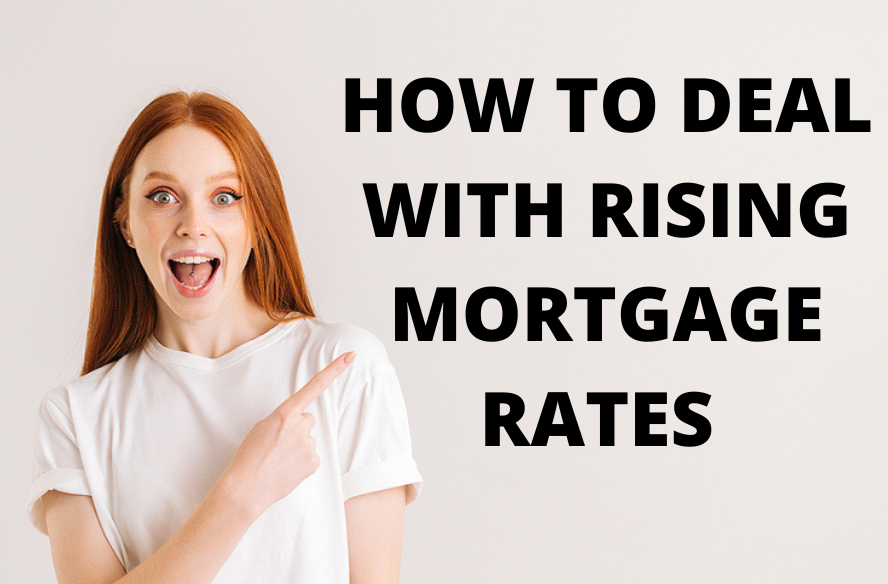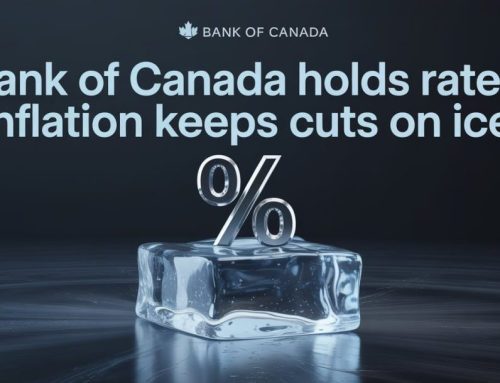Out of everything we can control in our lives, rising mortgage rates are not one of them. We do however have control over how we respond to them. Sure, you could sit back and ride out the storm. But there might be actions you can take to minimize the effect of the increases and therefore maximize the money left in your pocket at the end of the day.
Whether you’re shopping for a new home, have a mortgage coming up for renewal, or are currently in the middle of your mortgage term, there might be options to minimize the impact of the rate increases to come.
Take Control Of Your Mortgage Payments
Pretty much all lenders have flexible prepayment privileges that will allow you to increase your mortgage payments. Anytime you utilize these privileges, 100% of the additional payment is applied to your principal. This is how it works with every single lender, without fail.
If you’re in a variable rate, then your rate (and often your payment) will fluctuate with the prime rate. While there is no shortage of economic uncertainty, one thing we know for sure is that the Bank of Canada will be increasing their key policy rate multiple times this year. This is the rate that mortgage lenders use to set their prime rate. When the BOC increases their rate, your variable rate increases along with it.
Rather than wait for the imminent rate increase, I would consider increasing your payments in advance. It’s a lot easier to swallow when YOU are the one making the move rather than being forced to pay more due to something out of your control.
Your payments will still increase with the Bank of Canada rate, however, you have the option to revert to the lower payment if you need to.
How much should you increase your payment by?
First let’s look at how much we can expect your payment to increase after the Bank of Canada finishes its dirty work.
For every $100,000 in mortgage balance, your payments will increase by roughly $12 per month with every 0.25% the Bank of Canada increases the rate. For example, a 1.00% increase in rate on a $500,000 mortgage would result in a monthly payment that is approximately $240 higher.
The idea is to stay ahead of the game, so you are the one in control. By increasing your payments, you can minimize the future payment shock expected from rising rates.
Are You Shopping For a New Home?
Shopping for your new dream home can be fun and exciting. It can also be frustrating and exhausting in a competitive real estate market.
The first step of the process should always be to get preapproved. A preapproval will determine how much you qualify for and can also be used to lock in a rate prior to your new home purchase. The lowest promotional mortgage rates usually don’t become available until you have an accepted offer, so rates available at the preapproval stage are comparably high.
This is why locking in a rate doesn’t always make sense when rates are stable as it can sometimes eliminate the option for future rate promos with the same lender.
But when rates are rising quickly, locking in a rate is a great way to protect yourself against further increases. While the rate might seem high now, it might seem like a steal by the time you purchase.
Preapproval rates are generally valid for 120 days from the date your application is submitted to the lender. This means that your new home purchase must close within this window. If it closes beyond the 120-day rate hold period, the preapproved rate would no longer be valid.
Locking in a rate can also help with budgeting, as you can plan your payments based on the higher preapproval rate. This can prevent the shock of having higher payments than you initially planned for.
If rates are lower by the time you purchase, then you would still be able to access the lower rates, even if they are with a different lender. You may not need the preapproval rate, but it guarantees that your rate will not be higher than that, providing it closes within the 120-day window.
Do You Have a Mortgage Coming Up For Renewal?
With a few exceptions, most of the lowest rates have a maximum rate hold period of 120 days. When rates are increasing quickly, you will want to start looking into your options once you’re within that window. Depending on which lender you’re currently with, you may be able to start looking a month or two earlier.
There is a good chance that rates will be higher over the next few months. There is still a lot of uncertainty out there, so anything can happen. Fixed rates could also drop, but I wouldn’t count on it. If they end up dropping then we can always switch you over to the lower rate option. Either way… you win.
Are You In The Middle Of Your Mortgage Term?
You don’t need to wait until your mortgage comes up for renewal to make any changes. In some cases, switching your mortgage to another lender in the middle of the term can be cost-prohibitive, or it could save you north of $10,000. Every situation can be a bit different.
Switching mid-term can be an option as long as you’re not in a mortgage with a bona fide sale clause, which would lock you into that lender for the term. If you currently have any of the following mortgage products, then switching in the middle of your term would not be an option for you:
- MCAP Value Flex
- CMLS Rate Advantage
- BMO Smart Fixed Rate
If you’re not currently in any of the above, then chances are that your mortgage is fair game!
You’re in a fixed rate mortgage, then the penalty for breaking your mortgage can make switching cost-prohibitive. Some lenders can have much harsher penalties than others. For example, the penalty for breaking a fixed rate mortgage with a major bank can be as much as 900% higher than most non-bank lenders. That could mean the difference between a $5,000 penalty or a $45,000 penalty! There isn’t always this much difference, but I wanted to illustrate how big the difference can be. If rates were to fall substantially lower than the rate you’re paying, then the penalty can be significant regardless of which lender you’re with… fair penalty lender or not.
Now that mortgage rates have increased, it’s not likely that switching mid-term to another fixed rate mortgage mid-term will make much sense. Chances are, the current fixed rates are higher than what you’re currently paying.
If you’re in a variable rate mortgage at prime -0.90% (1.80%) or higher, then it’s possible that it could make sense to switch it to another variable. The lowest variable rates currently range from prime -1.46% (currently 1.24%) to prime -0.80% (currently 1.90%). Rates can vary depending on your situation, which is why there is such a large range.
If you’re in a variable rate mortgage and want to see if there is potential for savings, then please email us at pmteam@citycan.com with the following info so we can assess your situation:
- Maturity (renewal) date
- Balance
- The approximate market value of home/condo
- Original purchase price
- Closing date (the date you took ownership of the home)
- Current lender
- When you bought the home, did you pay CMHC insurance? (meaning you had less than 20% down payment).
- Do you have a Home Equity Line of Credit or any other component attached to your mortgage?
- Is the property owner-occupied or a rental?
With the above information, we can let you know the lowest rate that you would be eligible for and if you will save enough to justify making a move.
Switching to a lower variable rate would also give you additional protection against the anticipated rate increases. Feel free to reach out to us at pmteam@citycan.com and we’d be happy to discuss your options and see if there is opportunity to save you some money.
Conclusion
While we can’t do anything about the increases, there are additional steps we can take to prepare for higher rates. The rates increases are not coming as a surprise. After all, we couldn’t expect the pandemic-driven low rates we saw in the second half of 2020 to late 2021 to last forever. As we come out of the pandemic, things will start to revert to normal, and that includes mortgage rates.








Leave A Comment